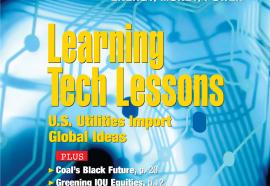Death of a Turkey
DOE’s move to ‘restructure’ FutureGen clears the way for more rational R&D.
When President Bush announced the FutureGen initiative halfway through his first term, industry veterans instinctively understood its purpose. Nominally a public-private partnership to build a “zero-emissions” coal-fired power plant, FutureGen stood as a symbol for the administration’s climate-change strategy. It helped the government argue mandatory carbon constraints were unnecessary, because America will develop more green technology than any other country in the world.





